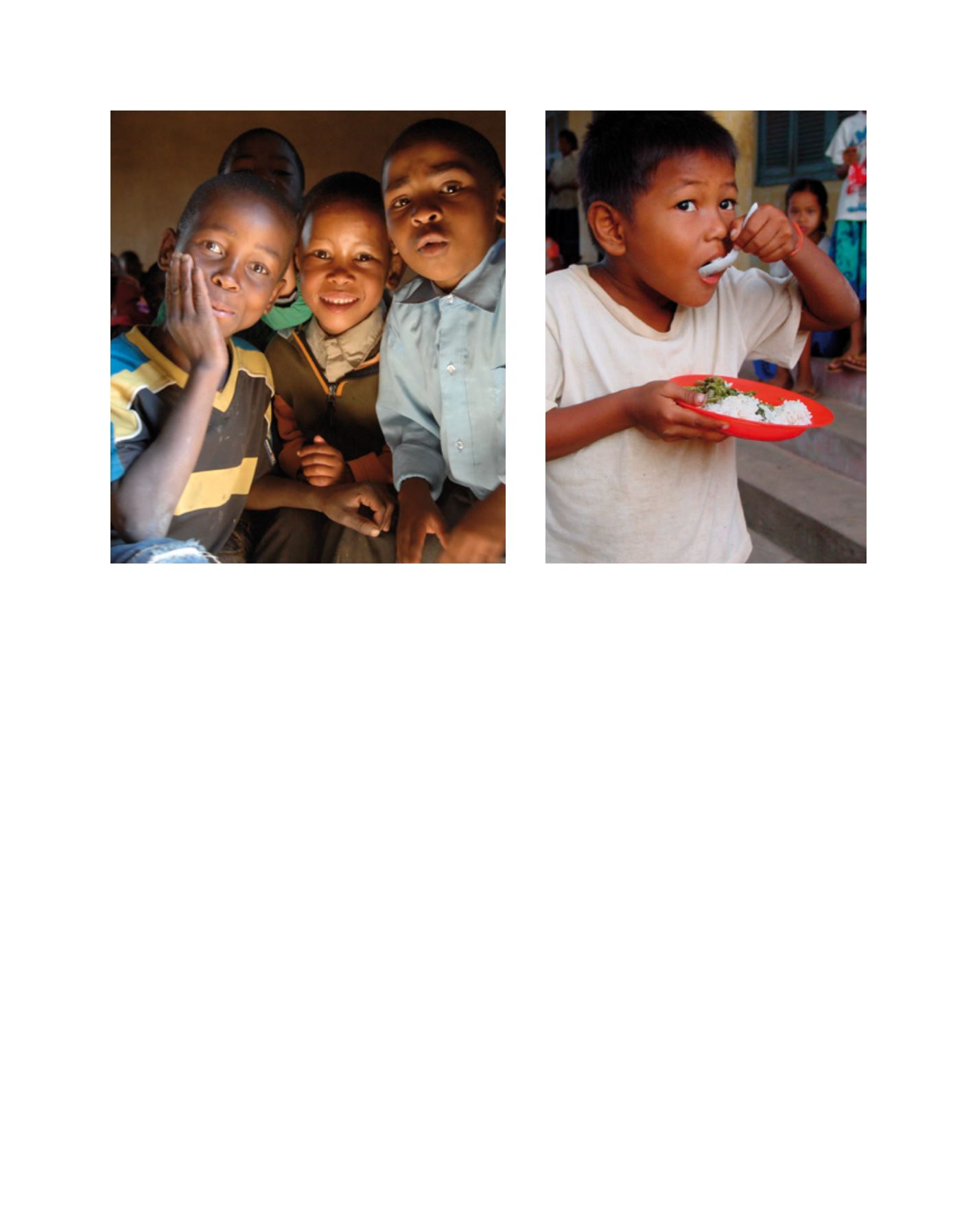

[
] 35
to safeguard households’ investments in education by
defraying some of the costs of schooling and encourag-
ing parents to enrol their children in school and ensure
that they attend class regularly throughout the complete
cycle. This helps protect children from the risk of both
formal and informal child labour and facilitates social
integration.
17
The value transferred is equivalent to the value of the
food transfer delivered to the child at school, the value
of the THR, or both. This serves as an incentive for
households to send their children to school and ensure
that they continue to attend. The provision of food
therefore alleviates short-term hunger, while support-
ing the longer-term goals of educational attainment and
improved nutrition and health.
School feeding value transfers have the potential
to increase school enrolment and attendance at times
when food-insecure families with low purchasing
power may be at risk of resorting to negative coping
strategies, including taking children out of school.
THR are the best vehicle for maximizing the benefits
that a school feeding safety net offers, by extend-
ing the value and impact of the transfer beyond the
benefits that a child receives from the food ration
consumed in school. THR can easily be targeted
to the specific groups that may be most in need of
support, such as girls, orphans or other vulnerable
children of school age and possibly other members
of a household.
where access to education is limited. Educated girls are more likely
to have fewer and healthier children and to head families that are
food secure. School feeding closes the gender gap in schools and
helps to empower women. It leads to improved protection from HIV/
AIDS and better access to work opportunities for women. It changes
the lives not only of girls but also of their future children. Maternal
and infant mortality rates decrease, and better-educated girls make
more informed choices. The World Bank estimates that only one
additional year of schooling for girls reduces the birth rate by 10 per
cent, and that every extra year of schooling provided to 1,000 girls
results in 60 fewer infant deaths.
12,13
When school meals are combined with THR, the effect on girls
is even greater. THR draw girls to school, maintain their attend-
ance and increase their progress from grade to grade, effectively
eliminating the gender gap in school. A major WFP review docu-
mented increased enrolment of girls in higher grades in schools
with combined on-site and THR programmes.
14
Similarly, the THR
programme in Bangladesh increased girls’ enrolment by 44 per
cent and boys’ by 28 per cent in schools on the programme, while
enrolment in non programme schools increased by only 2.5 per
cent during the same period.
15
Value transfer
The school feeding value transferred frees up resources within
households, averting negative coping strategies and allowing invest-
ments in productive assets. During periods of shock and reduced
purchasing power, families often resort to negative coping mecha-
nisms, including taking children out of school to save on school
fees and related expenses.
16
School feeding programmes can help
Food security and nutrition play critical roles in education and
human development
A schoolboy in rural Cambodia tucks into a healthy meal, courtesy of
the UN World Food Programme
Image: WFP/Stephen Wong
Image: WFP/Heather Hill
















